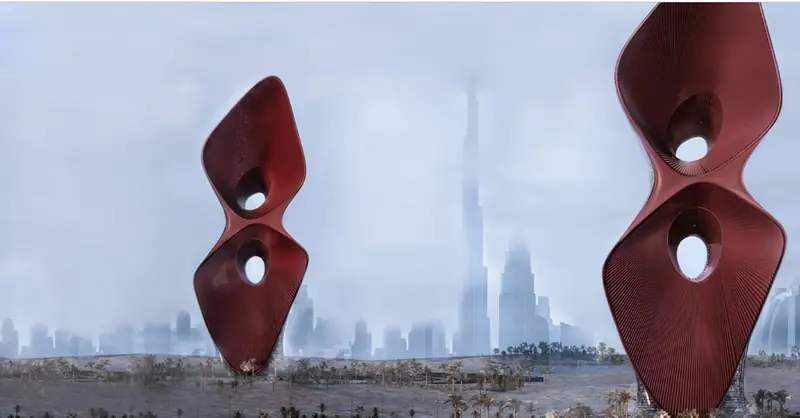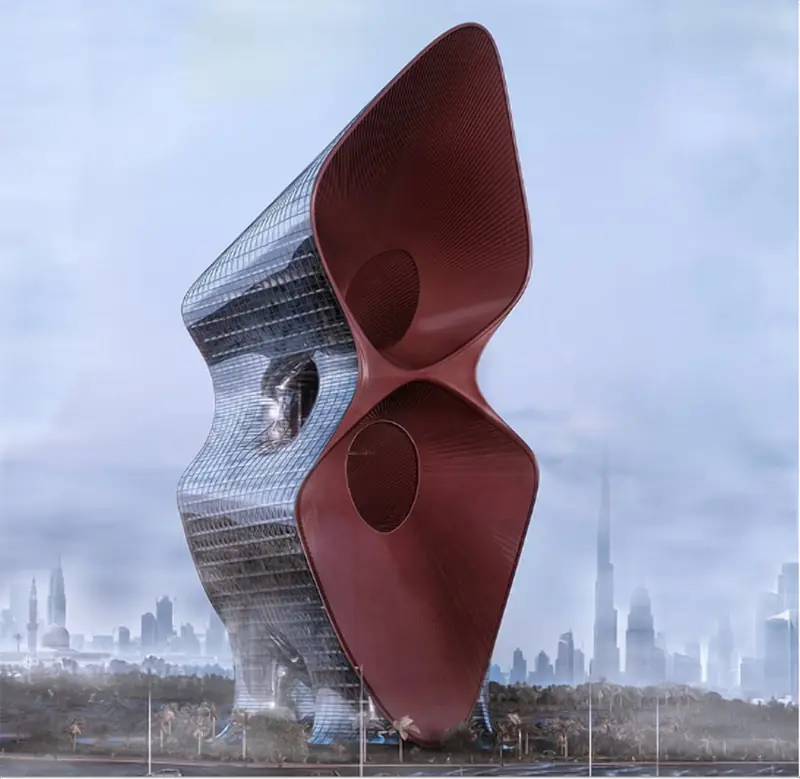
As part of the Absorbent Sandstorm project, designed by Kalbod Design Studio, Dubai (UAE) will see the construction of 25 extraordinary skyscrapers. These won’t just be towers with residential and commercial spaces; they will serve a unique ecological mission: combating sandstorms that disrupt the quality of life in modern megacities.
The towers will capture sand particles and pollutants from the air, then neutralize them using magnetism, according to Designboom. The project’s creators believe that these giant vacuum-like structures will significantly improve the air quality in Dubai. Likewise, the water will also benefit, making sandstorms less catastrophic for residents and visitors alike.
Ultimately, this new district will merge the concept of ambitious urban development with a commitment to the ecology of the tropical desert region.

About the Functionality of the Skyscrapers
The Absorbent Sandstorm project will enhance the city’s profile with these extraordinary structures, which seem to have been borrowed from a Star Wars saga.
This raises the question: why 25 towers? The answer is that one or two would be insufficient to tackle the sandstorm issue. The designers calculated the optimal number of skyscrapers and the “right” locations for them. This way, the buildings will function effectively as a single organism, complementing each other.
Each skyscraper will feature two massive deep cavities that will suck in sand particles using magnetism and remove their electrical charges. Pollutants will enter the cavity and adhere to the inner surfaces of the opening. To neutralize all particles, their electrical charges will be absorbed in two stages. Interestingly, the lower cavity has a larger opening to accommodate the bigger diameter of particles found at lower heights.

The design team also believes it would be beneficial to install sand batteries in these skyscrapers. These batteries will store energy within the towers for several months, and even allow for energy use in other buildings across Dubai.
As noted by the Kalbod Design Studio team, the district will play a vital role: it will serve as a research base for studying sandstorms and finding more effective solutions to combat them.
According to the project’s authors, the complex will have another key function. It will serve as a multidisciplinary zone focused on scientific research. Thus, in addition to residential spaces, the buildings will house research institutes. Each skyscraper will have its own specialization. Currently, it is known that the institutes will focus on physics, biology, medicine, new technologies, and aerospace.

